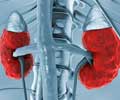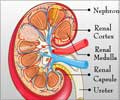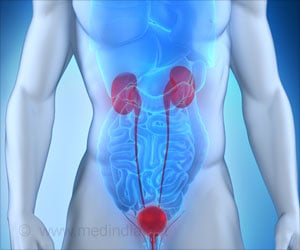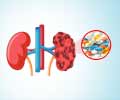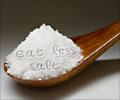The sodium content in skin is found to be associated with an increase in left ventricular mass in chronic kidney disease patients.
- Skin salt level was found to be associated with heart structural changes in chronic kidney disease patients by a research team in Germany.
- An increase in the skin sodium content correlates with left ventricular hypertrophy in chronic kidney disease patients.
- Monitoring the levels of salt in the skin is essential for lowering the risk of heart problems.
Sodium in the Body
Studies that were conducted in the recent past have shown that skin, muscle and certain other tissues store sodium. Dr. Markus Schneider from the University of Erlangen-Nuremberg and his colleagues wanted to identify if the sodium levels in these newly diagnosed places of sodium deposition were associated with the severity of left ventricular hypertrophy in patients with chronic kidney disease.Measuring Skin Sodium Levels
About 99 patients with mild to moderate chronic kidney disease were included in the study and the research team used 23Na-magnetic resonance imaging for measuring the level of sodium content in the calf skin. Other parameters that were measured include blood pressure over a period of 24 hours, the total body water level and the left ventricular mass.The study found that
- The content of sodium in the skin correlated with systolic blood pressure
- The total body water content did not correlate with systolic blood pressure
- There was a stronger correlation between skin sodium and left ventricular mass than total body water
- Further analysis showed that the sodium levels in the skin were a strong variable linked to the left ventricular mass, irrespective of the total body water or the blood pressure
- Dietary sodium restriction
- Medications which increases sodium excretion
Salt and Its effect on Blood Pressure
The amount of salt that is consumed is directly associated with blood pressure. Salt makes the body hold onto water and, in the event of an excess salt consumption; the additional water that is stored in the body requires the heart to pump more, raising blood pressure levels. Therefore, the higher the intake of salt, the higher the blood pressure of the individual.An increase in the blood pressure, in turn, adds to the strain on the arteries, heart, brain and the kidneys. This could result in strokes, dementia, heart attacks and kidney disease. Excess intake of salt could medications for blood pressure and diuretics ineffective.
Effect of Salt on the Arteries
The increase in blood pressure that is caused due to excess consumption of salt adds to the strain on the inner walls of the arteries. To make up for this strain, the artery walls become thicker and stronger. This results in reduced space of the artery walls.Restricting the salt intake in the body is, therefore, an important criterion for lowering the risk for cardiac problems and changes in the structure of the heart of chronic disease patients.
- Salt's effects on your body - (http://www.bloodpressureuk.org/microsites/salt/Home/Whysaltisbad/Saltseffects)


